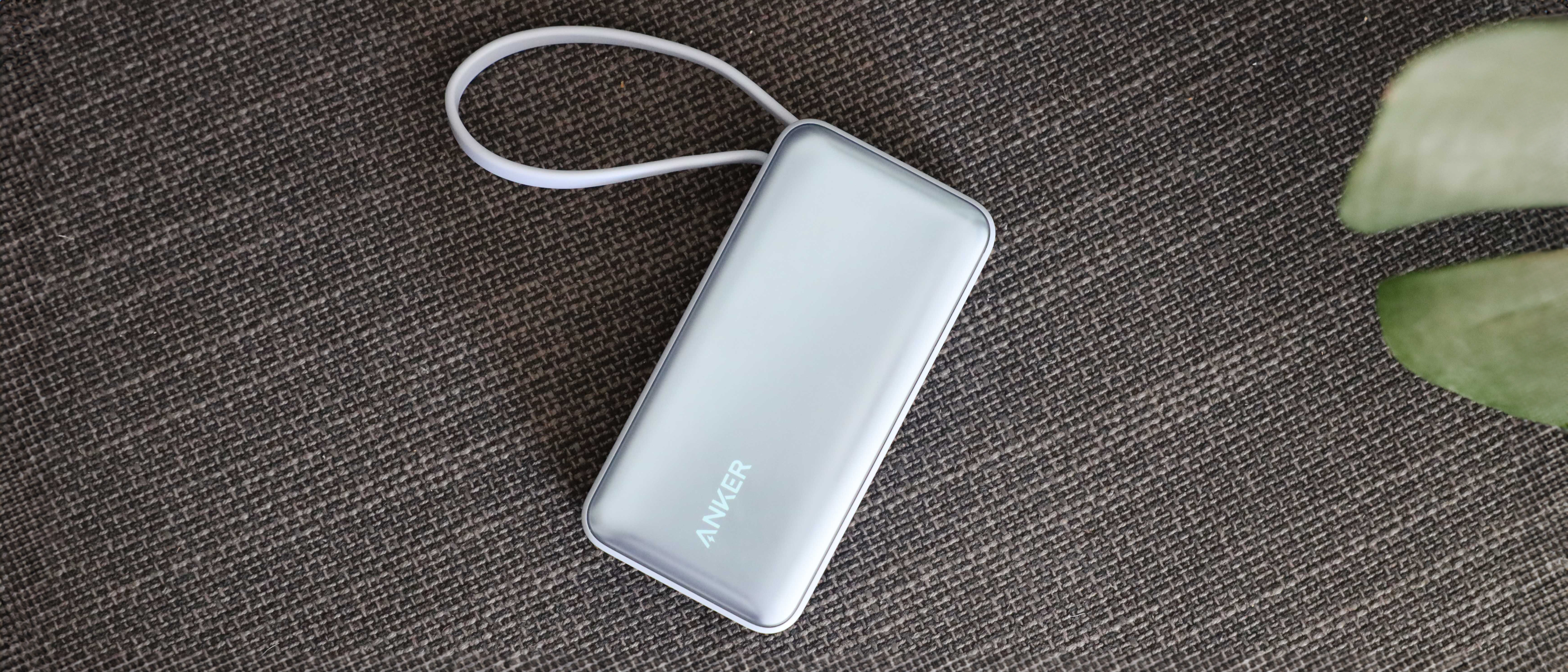Digital Camera World Verdict
The Anker Nano is a very cute power bank, with a color to suit nearly everyone. The built-in USB-C cable is also a lifesaver as I can never find a cable when I really need one, using it as a carry handle is also a nice touch and the connection feels secure enough to do so, and will hopefully survive long-term use. The capacity is a little small to get the battery down to this pocketable size, although it will give your phone around two recharges. The additional USB outputs are appreciated for a battery emergency, but will just drain this power bank's small tank even quicker.
Pros
- +
Very small and cute
- +
Built-in USB-C cable that doubles as carry handle
- +
Additional USB-C and USB-A ports
- +
Battery percentage screen
Cons
- -
Screen is hard to read in the direct light
Why you can trust Digital Camera World
Anker has reinvented its Nano range as a new series of products encompassing chargers and power banks of all sizes, and as the name hints at, the connecting theme of the new Nano series is that all these devices are small. Why the new line? Well, the iPhone 15 is just around the corner, and by all accounts the new generation of iPhones will finally make the jump to USB-C, so you best believe Anker will be ready to offer some new charging solutions to Apple upgraders.
The new Anker Nano series also has a new fun and colorful design to it, with a nod to the more colorful iPhone 14 models, and while we have seen all the elements of this new Anker Nano 30W power bank before in its other devices, it has been redesigned to fit the new Nano branding. So the new Nano power bank might look good, but does it still nail the basics?
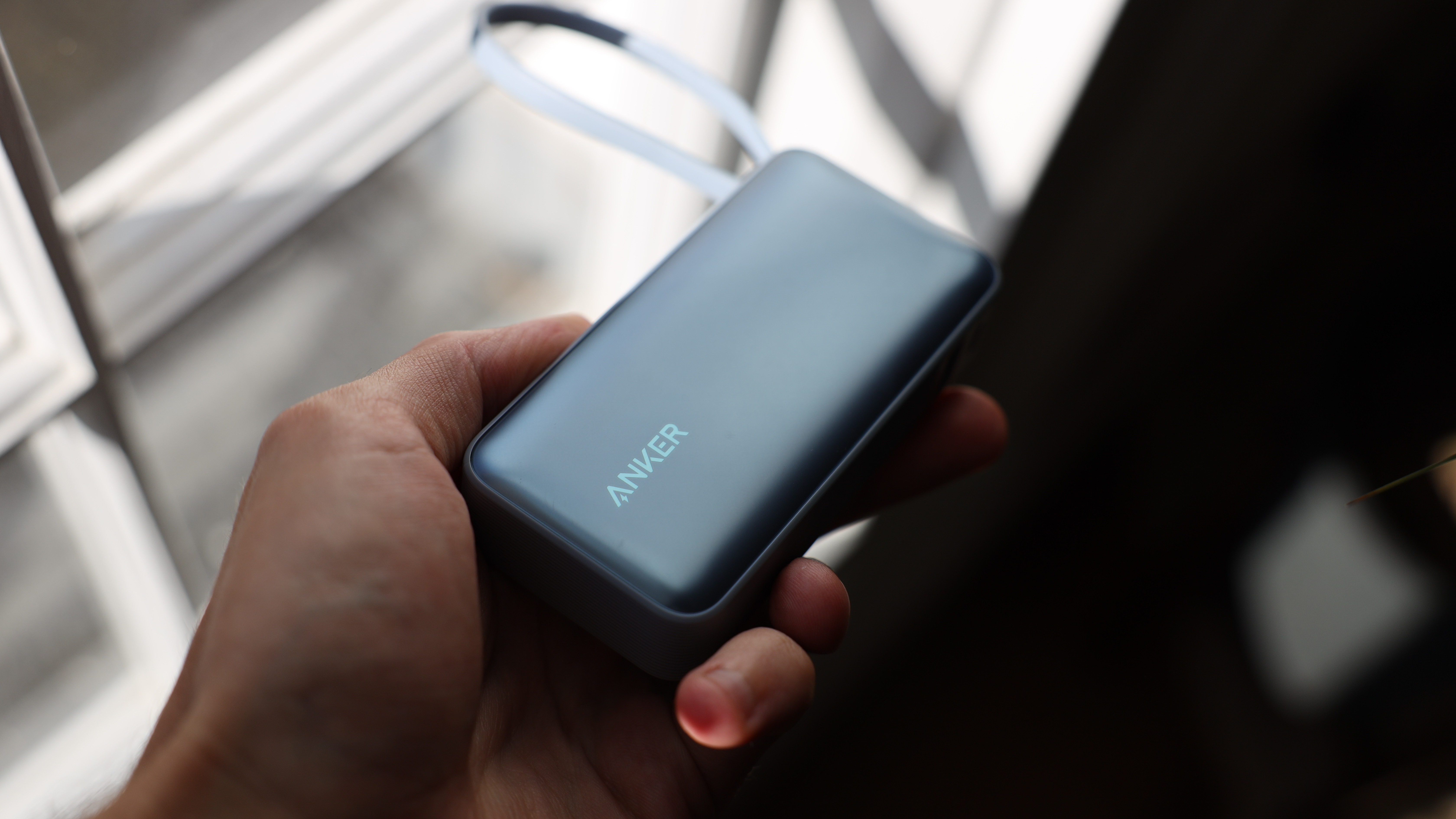
Anker Nano 533: Specifications
| Capacity: | 10,000mAh |
| Outputs: | 1x USB-C (built in cable), 1x USB-C, 1x USB-A |
| Wattage: | 30W (USB-C), 22.5W (USB-A) |
| Size: | 114 x 53 x 25mm / 4.09 x 2.06 x 1.02in |
| Weight: | 216g / 7.58oz |
Anker Nano 533: Key Features
The Anker Nano has been redesigned from previous Anker power banks, adding new colors and textures, although the power bank is still available in a demure black for those who want to keep it simple. The design has taken some big leads from Anker's previous power banks though with a built-in USB-C cable that also does double duty as a carry handle, as well as a TFT screen on the front showing battery percentage and how much battery is remaining in hours and minutes.
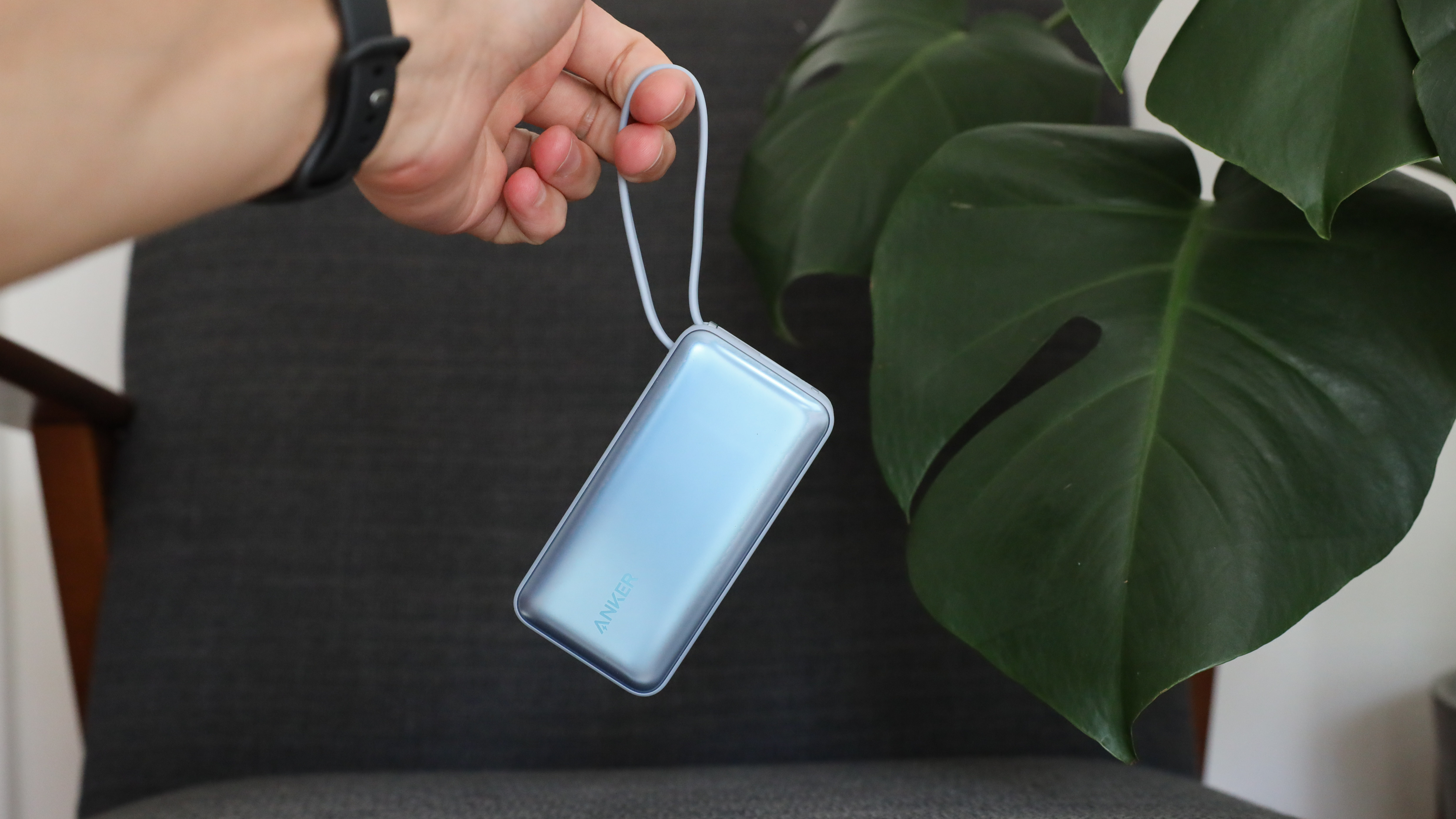
The Anker Nano 30W as its name suggests has a maximum power output of 30W when using a single USB-C connection, the power bank also has an additional USB-C and USB-A connecting, but when using all three connections together, the power output drops to a combined 24W across the three ports. The Nano 30W has a 10,000mAh battery that should be enough to charge an iPhone 14 or Samsung Galaxy S23 two to three times over. The power bank also has built-in temperature monitoring to ensure it never gets too hot.
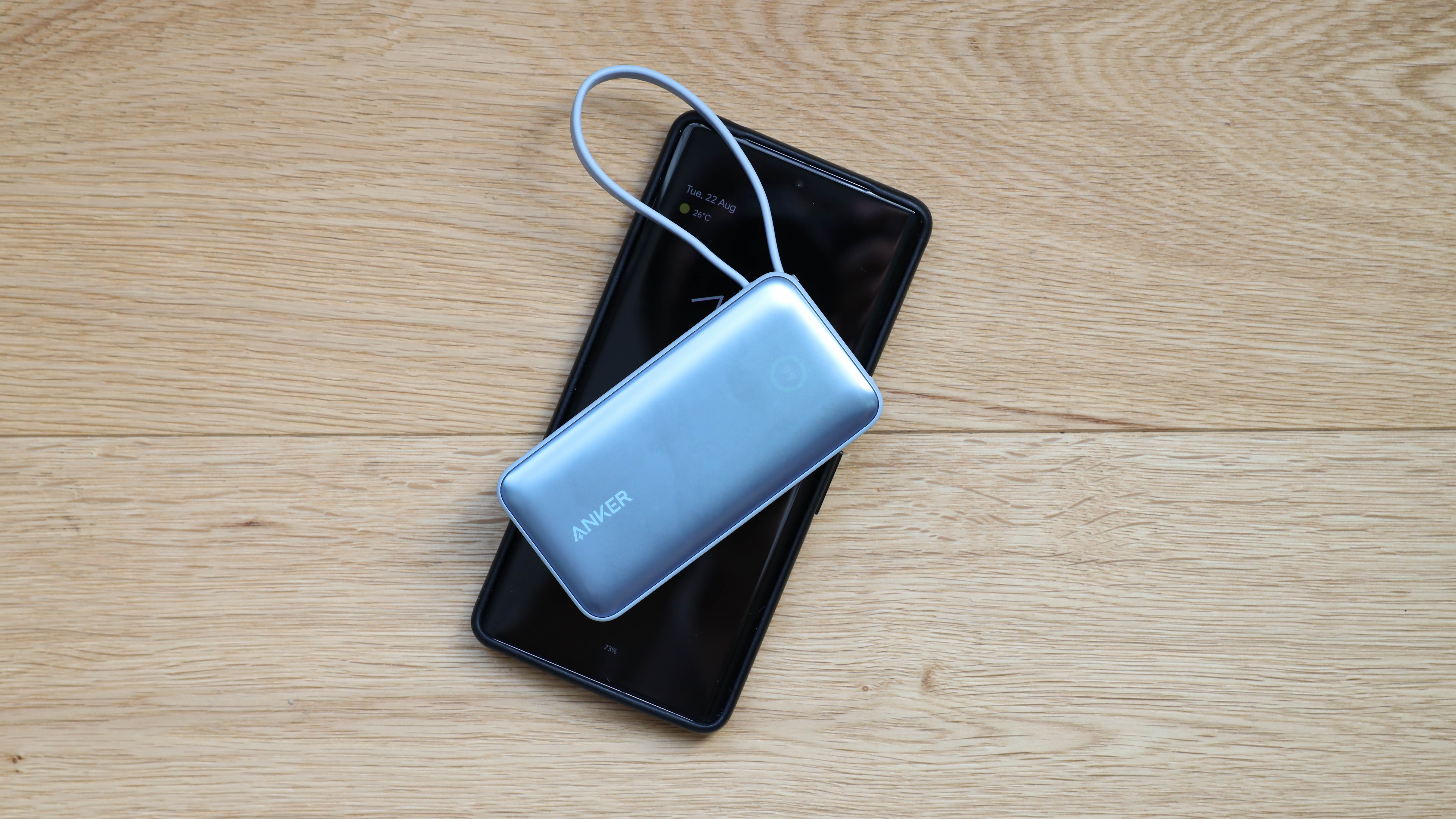
Anker Nano 533: Build & Handling
The new design is really nice, and the power bank looks very cute, although I do also like the more serious-looking gunmetal grey power banks from Anker's more premium range. I have the blue power bank for review, which does clash a little against my boring all-black phone, so the choice of colors does make a difference.
The outside of the power bank has a ridged grippy texture which makes it easy to hang onto, especially if you are trying to juggle the power bank and your phone in one hand. The top is a tiny iridescent material that looks cool, but is a bit of a fingerprint and grease magnet and required a lot of wiping on my shirt.
There is a TFT screen built into the power bank, which is incredibly useful, I have used a lot of power banks now and this screen is by far my favorite way of monitoring battery percentage. However, I found that the percentage would get to 1% and only "1 minute" of power remaining, but it would still last for quite a while longer than that, so I am not sure it is calibrated perfectly.
The screen on the Anker Nano is very challenging to read in direct sunlight, with the material it sits behind just reflecting a lot of light, but if you shade it or turn it away from the light then reading it is fine. It is a shame that this screen also doesn’t show the output speed like some of Anker’s bigger power banks do, but I guess sacrifices have to be made versus those more premium products.
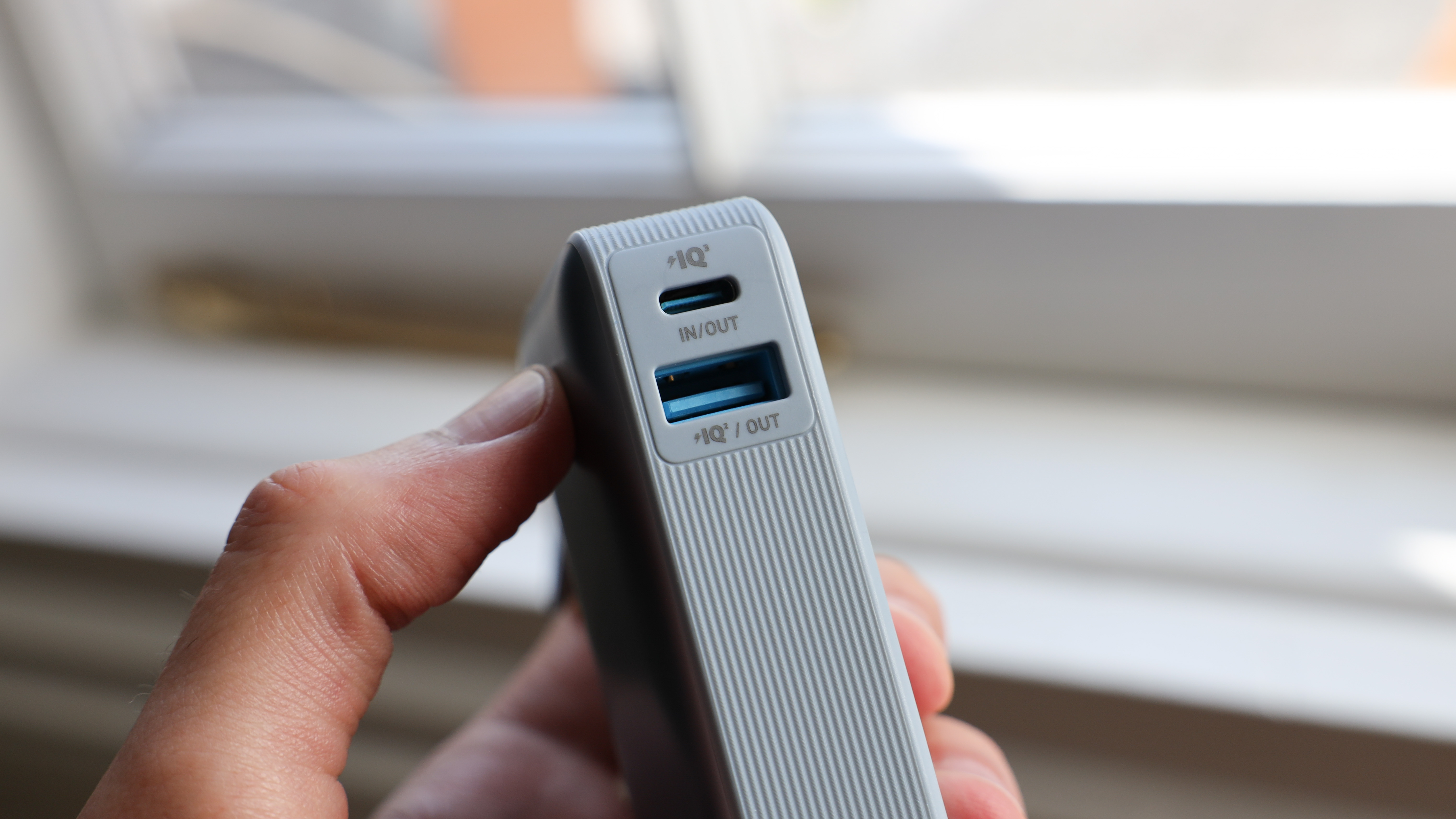
I can’t praise enough how incredible the cable being built into the power bank is, I can never seem to find a short USB-C cable when I need one, or I am just forever losing them, so this makes it so simple to know that I can just pull the power bank out and start charging in a flash. Doubling up the cable as a carry handle is also a nice touch, although I don’t tend to walk around swinging my power bank, it's an easy way to grab the power bank from the bottom of a bag. The cable feels very secure and I am not concerned about it getting damaged anytime soon, although I will be interested to see how it holds up in the long term.
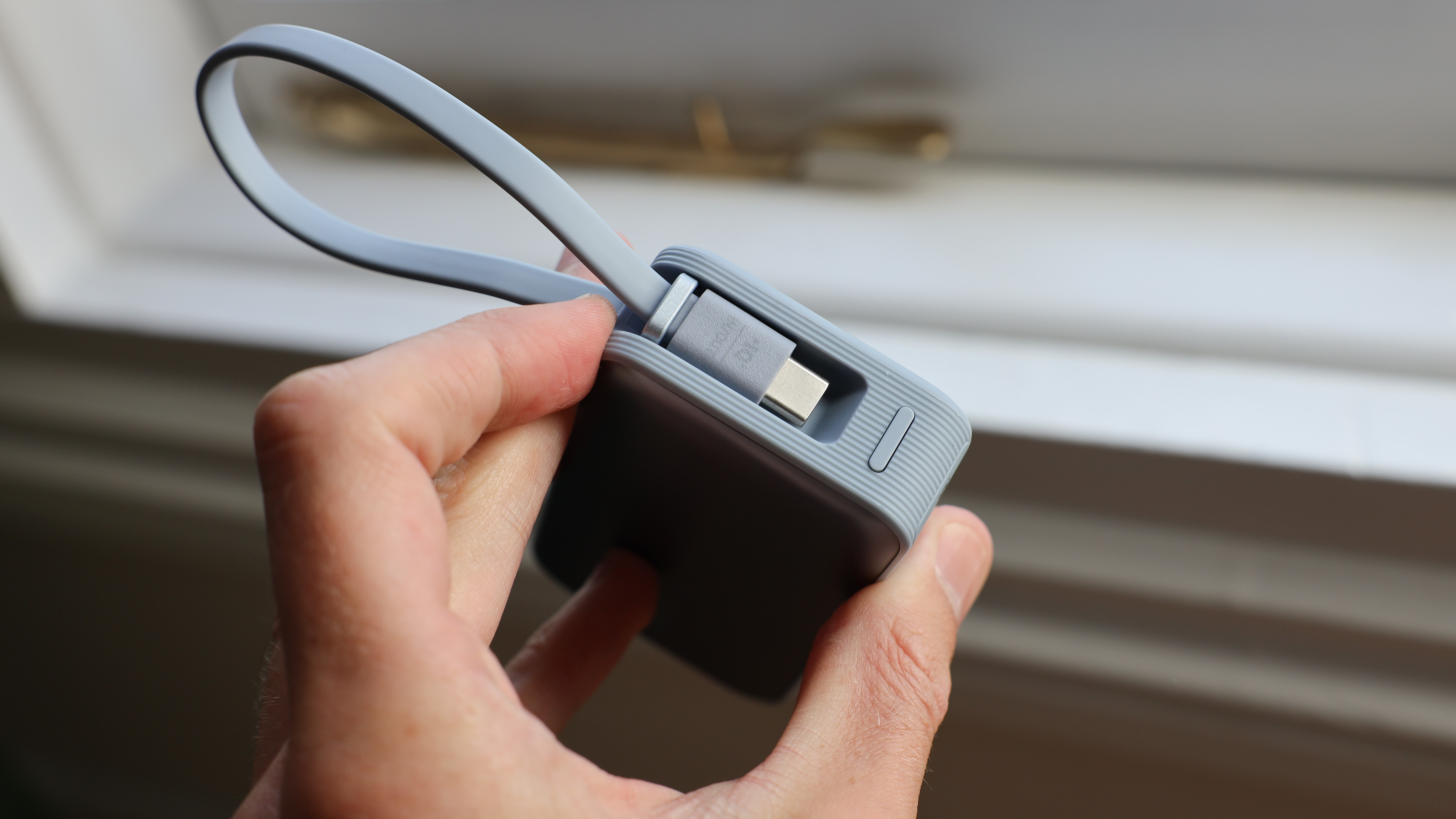
Anker Nano 533: Performance
The Anker Nano 30W performed very well when used to charge my Google Pixel 7 Pro, it managed to charge the device to around 50% in just over 30 minutes, and around an hour and a half for a full charge. The Pixel has a 5,000mAh battery, so theoretically, I can get exactly two full charges out of the Nano 30W power bank. I would usually only use a power bank to charge my phone when it was getting dangerously low, so I actually was getting a few days of little top-ups out of this power bank.
The iPhone 14 Pro Max has the biggest iPhone battery at 4,323mAh battery, with the rest of the range packing smaller batteries, so iPhone users can get a little more mileage, although currently, you will need to plug a cable into the port on the side.
Neither the Pixel 7 Pro nor iPhone 14 Pro can use the full 30W speed to charge, with the Pixel topping out at 23W and the iPhone 15W of charging speed. Other Android phones like the Samsung Galaxy S23 range however can take full advantage of the 30W speed (and can go even higher). However, it is good to know going into the future that this power bank is prepared for faster phones.
The Anker Nano 30W two ports on the side can be used for a range of other devices. I used these to charge my Pixel Watch and its notoriously lousy battery a few times, as well as my Fujifilm X-E4. Although using these additional ports means the not-capacious 10,000mAh tank will be used up much faster, so probably isn’t best to be relied upon on a regular basis.
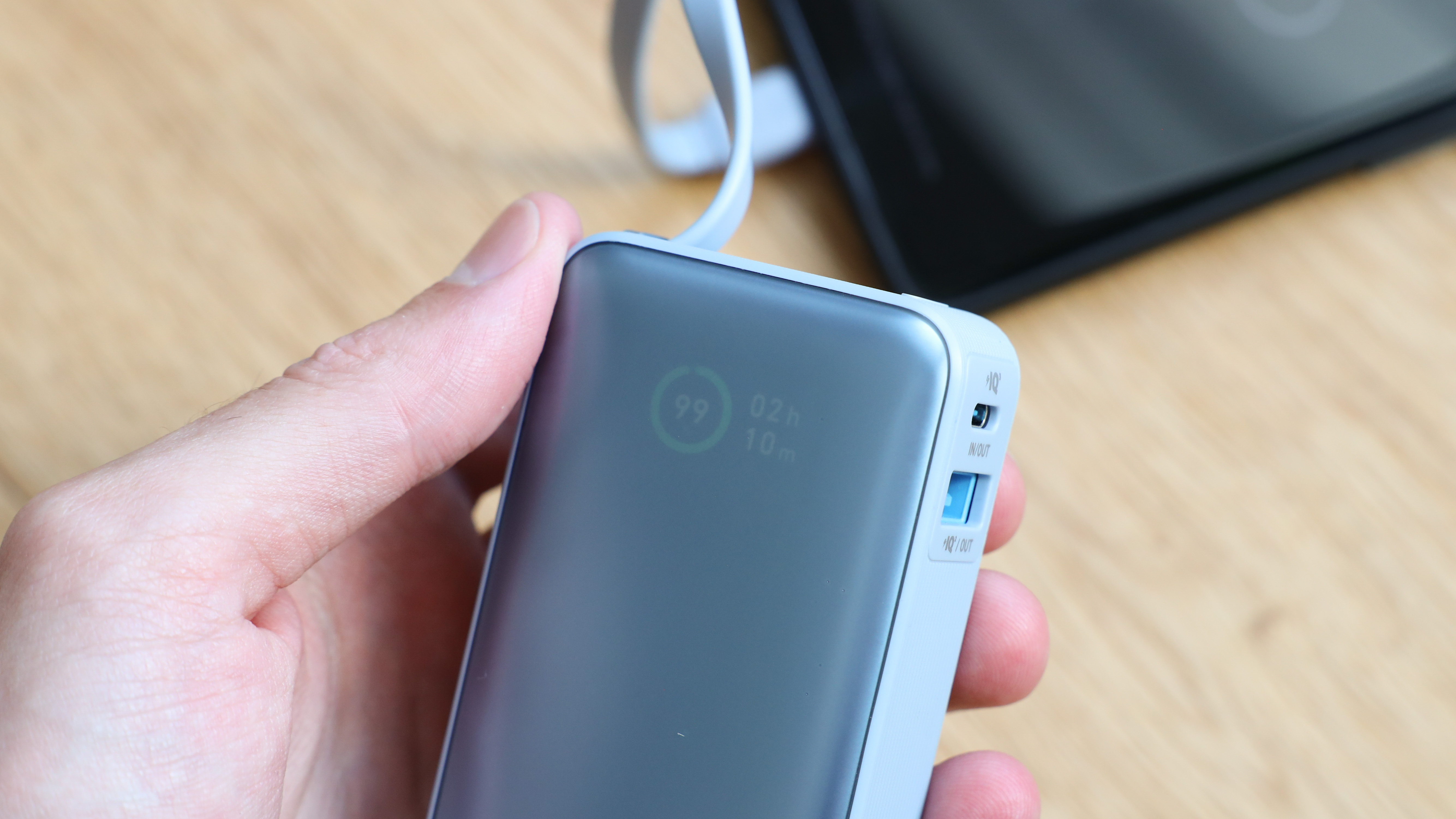
Anker Nano 533: Verdict
The Anker Nano stands out as an adorable power bank available in a variety of colors and tiny pocketable size. The integrated USB-C cable is invaluable, addressing lifes perpetual struggle of locating a small USB-C cable when required urgently. Its dual function as a convenient carry handle is a thoughtful addition and makes grabbing the power bank on the go easier. The connection feels reassuringly secure, and hopefully will remain as durable over its lifetime. The capacity is intentionally limited to achieve a compact, pocket-friendly size, but will still equate to approximately two full phone recharges or more depending on your phone make and model. While the supplementary USB outputs are a welcome feature during battery emergencies, they will expedite the depletion of this power bank's modest power reserves.
Read more: find more of our top picks for charging your devices with our guides to the best GaN charger or for charging on the go check out the best iPhone power banks.

Gareth is a photographer based in London, working as a freelance photographer and videographer for the past several years, having the privilege to shoot for some household names. With work focusing on fashion, portrait and lifestyle content creation, he has developed a range of skills covering everything from editorial shoots to social media videos. Outside of work, he has a personal passion for travel and nature photography, with a devotion to sustainability and environmental causes.
